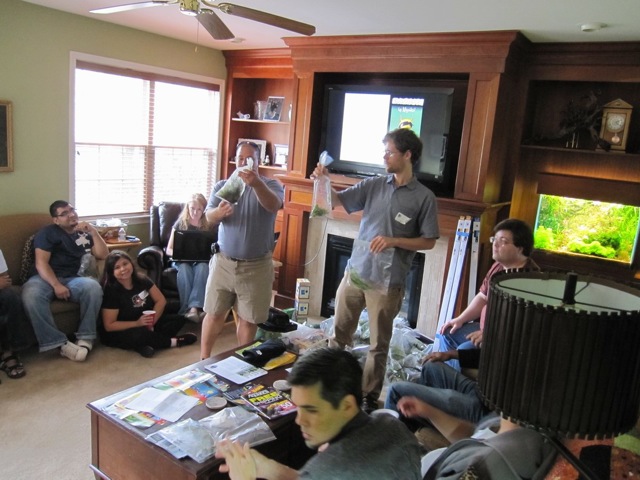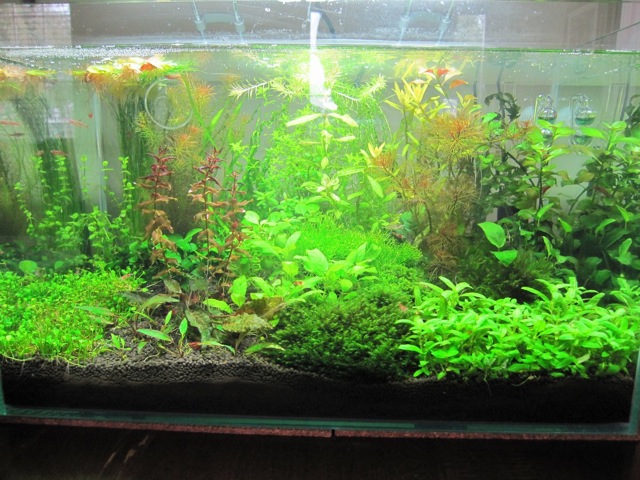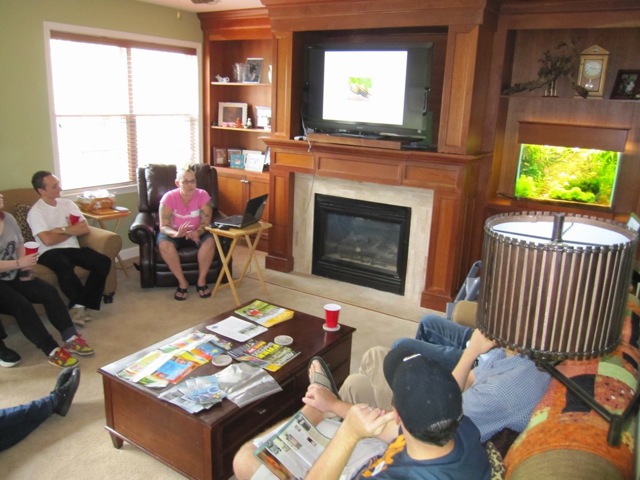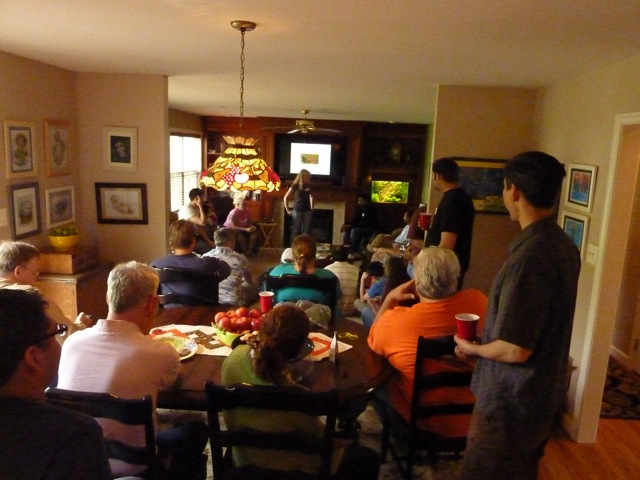September 2011 Meeting
The September GWAPA meeting was hosted by Julie Weis at her home in Ijamsville, MD on September 24. At least 40 people (including a number of newcomers –welcome!) came to view Julie’s tanks, and to hear Rachel O’Leary of Msjinkzd.com speak about freshwater invertebrates. Members participating in the recent GWAPA group order with Rachel also picked up their fish and invertebrates at the meeting.
Before Rachel’s presentation there were a few announcements:
October’s meeting will be a joint meeting with the Aquarium Club of Lancaster County at That Fish Place in Lancaster, PA on October 15. That Fish Place is a “huge” store with a big plant section, well worth the drive. The day’s events will kick off at noon, with a talk by Allen Wood of the American Livebearer Association. GWAPA’s portion of the event will begin at 2:00 with Kris Weinhold’s talk on hardscape. Small groups will then work on putting together hardscapes in 10 gallon tanks, assisted by GWAPA members. The winning tank will be raffled off. According to ACLC president Kurt Johnston, ACLC members are really looking forward to this joint event.
It’s time to start thinking about GWAPA’s board for next year. Several board positions will be open, and members are encouraged to consider a position. A thread will be started on the forum soon. Nominations are due at the October meeting. The election will be held online, with results announced at the November/December meeting.
Thanks to our Corresponding Secretary Arlene Wagner, who reached out to 250 vendors for donations, the club is able to resume doing raffles at meetings.
Aquascaping kits are still for sale at $20.
This year’s aquascaping contest ends soon! Keep an eye on the forum for details.
Rachel spoke on the subject of “Freshwater Invertebrates: Myths and Misconceptions.” Although introduced as the “resident guru of all things invert, nano, or monster,” Rachel says she considers herself a “professional hobbyist.” She began her importing business because she had trouble finding certain fish and invertebrates locally. She started importing to get “new stuff” for herself and sold the extras, and went from 5 tanks to 50 within 5 months. Rachel’s interests range from invertebrates and very small fish, to “monster” fish.
Rachel addressed the major myths about invertebrates (such as “snails eat plants” “shrimp are difficult and always hybridize” and “invertebrates can never be kept with fish”) , and gave us a rundown on many species currently available in the hobby, and their care requirements.
Rachel’s interest in invertebrates began with the apple snail, Pomacea diffusa. She has experimented with line breeding them, to achieve a variety of colors. Rachel stressed the need to be responsible with these snails, as it is very easy for their numbers to get out of hand. Each female can lay 200 eggs! If you can’t handle their huge numbers, you must dispose of the eggs, which are laid above the water surface. Apple snails are great for fry tanks, as they will eat fungused eggs, while ignoring healthy eggs. Their feces are an excellent source of infusoria for fry. Rachel also discussed the zebra apple snail Asolene spixi, Tylomelania snails (which she no longer deals with because they often harbor leeches), the various nerite snails (“an amazing addition to the hobby”) and assassin snails (about which she has some reservations, as they lay their eggs in filters and at the base of plants, making it easy to spread them around unknowingly).
Rachel gave an overview of a dizzying number of shrimp species, including the cherry shrimp (the “best starter shrimp”), crystal red shrimp, the popular algae eating Amano shrimp, the bumblebee shrimp (a “striped shrimp that’s bombproof”), malawa shrimp, red nosed shrimp, the filter feeding green lace shrimp, and more.
Crayfish have a reputation for destroying plants, but this is not true of all species. Dwarf species Cambarellus patzcuarensis, Cambarellus montezumae, Cambarellus shulfeldtii are often kept in planted tanks. They may be aggressive towards each other, but can be kept with other invertebrates and fish.
It is important to choose carefully and be realistic when keeping invertebrates such as dwarf shrimp with fish. Rachel has had success keeping them with small fish such as Corydorus habrosus, otocinclus, Boraras brigittae, Danio erythromicon (which “may take out a few babies”), Hyphessobrycon amandae, and others. She has kept amanos with Discus, although it does depend on the fish.
When setting up a tank for invertebrates, it is important to consider their requirements for pH and hardness. For some species, using RO water and a substrate that lowers the pH may be appropriate. Leaves and driftwood may also be helpful. A sponge filter should be used, or the filter intake covered to prevent shrimp being sucked into the filter. Invertebrates should only be added to a well-established tank; they are intolerant of ammonia and nitrite, and cannot handle nitrates above 20-30ppm.
Common mistakes when keeping invertebrates are overfeeding, overfertilizing, incorrect water parameters, inappropriate tank set up, inappropriate tank mates, or adding them to a new tank.
Rachel can be contacted at msjinkzd@gmail.com
Her website is Msjinkzd.com
She is also a presence on these sites; aquariacentral.com, monsterfishkeepers.com, capitalcichlids.org, and plantedtank.net, as well as the GWAPA forum.
The meeting concluded with our usual mini auction, which was anything but “mini”! It took nearly two hours to auction off over 150 items.

–jrh




